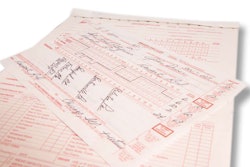Nationwide protests in recent weeks over the death of George Floyd, who died while being held to the ground by former Minneapolis police officer Derek Chauvin, have closed down highways and, in some cases, made it difficult for truck drivers to continue along their routes.
This was most evident on May 31 when Bogdan Vechirko, an owner-operator for Kenan Advantage Group, drove into a crowd of thousands of protesters on I-35 West in Minneapolis. He didn’t hit anyone and no one was hurt, but after he came to a stop, he was pulled out of his cab and beaten until some protesters stepped in to shield him until police arrived.
Collin Mooney, executive director of the Commercial Vehicle Safety Alliance, said he strongly recommends truck drivers do their best to avoid areas where large protests are occurring.
“Even a peaceful protest can transition pretty quickly into a violent situation,” he said, as evidenced by the Minneapolis incident. “I recommend if any truckers are operating in any area where protests are gathering or plan to gather, avoid the area altogether. Not just for their safety, but for preserving the equipment and supplies as well.”
Doug Morris, director of safety and security for the Owner-Operator Independent Drivers Association, also suggested avoidance is the best option for truckers when it comes to protests. If that’s not possible, however, he said to call the police and tell them where you are and if you’re hauling hazmat. If your truck gets surrounded, he added, try to lock yourself in your truck to stay safe and be prepared to defend yourself.
“I’ve seen in past experiences, you never know what’s going to happen,” Morris said. “When protesters have dragged drivers out of their cab, they generally beat them. The cab of your truck is your cocoon, and it’s best to lock yourself in, roll up your windows and do your best to defend yourself. Drivers are allowed to carry a tire thumper to beat the tires to check the air – use that as a defensive weapon. I know a lot of drivers have handgun permits. Make sure it’s legal to carry in the particular state you’re in, but if somebody comes at you with deadly force, you can respond with deadly force.”
Morris added that drivers should be aware that any action they take, even in self-defense, “will be looked at and investigated by law enforcement, and you could be charged if you did something wrong.” However, “if somebody is trying to hurt or kill you, you have to defend yourself,” he said.
The fact that Vechirko was driving a tanker was even more concerning to Mooney, he said. Vechirko happened to be empty, but had he not been, “if that tank was to roll, it could have been a very tragic situation,” Mooney said.
The incident with Vechirko was reminiscent of the 1992 Los Angeles riots when a group of protesters pulled truck driver Reginald Denny from his cab and nearly beat him to death, costing Denny his trucking career due to injuries that affected his speech and ability to walk.
Morris said the Denny incident is one that is still in the back of the minds of many truckers today.
Mooney said he appreciates the sentiment of truck drivers to “not want to be the next Reginald Denny,” he said. “You never want to be in a confrontational situation. The best course of action is always avoidance and not being caught up in the middle.”
The Iowa Motor Truck Association said in a letter to members that when a truck driver sees masses of people blocking the roadways, he or she should stop as soon as possible and look for ways to avoid a confrontation.
“Do whatever necessary to change directions and get out of the area,” IMTA said. “If you are alert, you should be able to see these masses of people far enough in advance that you can act before being surrounded.”
If avoidance isn’t possible, however, IMTA offered several tips to help drivers keep themselves safe:
- Keep your doors locked and take your seat belt off if you think you might be attacked. If your doors don’t automatically lock, get in the habit of doing it manually – especially the passenger side door. If you encounter a situation where you could be under attack, remove your seat belt before being attacked so you can exit the truck more quickly if you have to. “It’s [better] to take your chances on foot than be trapped inside,” IMTA said.
- If you have time, crack your windows and turn off the ventilation system. Windows that are down approximately a half inch are harder to break than a window that is tightly closed, IMTA said. Turn off your ventilation system to prevent smoke or teargas in the air from getting into your cab.
- Beware of other forms of roadblocks. IMTA said protesters and rioters can make their own makeshift roadblocks with stolen cars parked to block a roadway, causing other drivers to stop.
- Keep your dashcam on. Information recorded on your dashcam could help law enforcement if anything goes wrong. It can also help you for insurance purposes.
- Call ahead to customers. A quick phone call to a customer in an area suspected of having protests can help in knowing what to do and where to go.
- If hauling hazmat, call 911 immediately. Be prepared to identify your location and to tell first responders what you are transporting. This can help law enforcement protect you and everyone in the vicinity of the hazardous materials.









